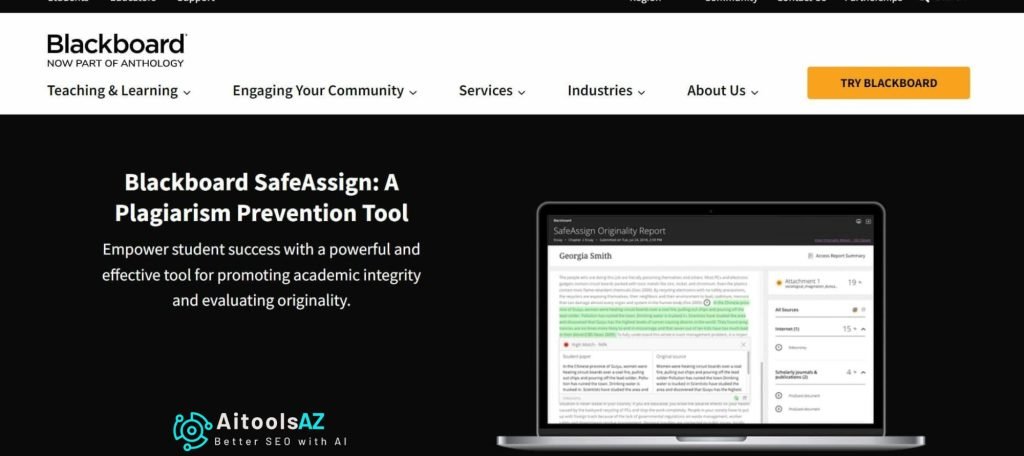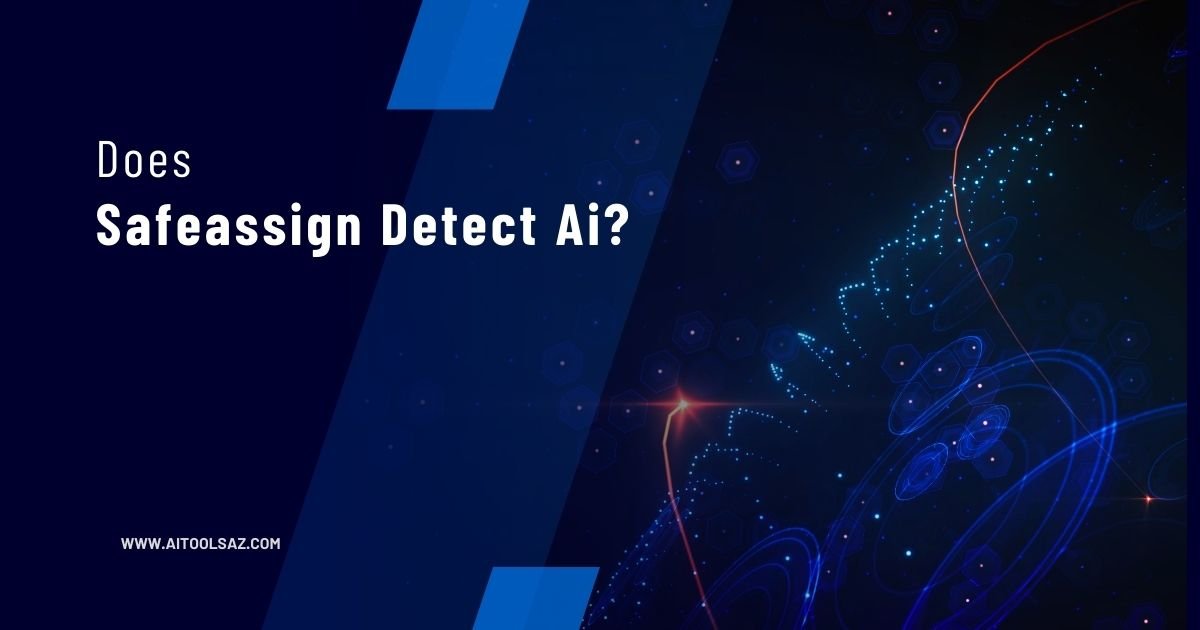I have some big news for all students out there: SafeAssign, the renowned plagiarism detection tool, might just be getting a run for its money. Yes, you heard it right! With the rise of artificial intelligence (AI), the question arises – can SafeAssign truly detect AI-generated papers?
As an avid researcher myself, this topic has piqued my interest. In this article, we will delve into the intricacies of SafeAssign’s plagiarism detection process and explore the challenges it faces when dealing with AI-generated content.
We live in an era where technology is advancing at lightning speed, and ensuring academic integrity becomes increasingly crucial.
So join me on this analytical journey as we uncover how institutions can maintain their standards while combating the ever-evolving world of AI in academia.
Understanding SafeAssign’s Plagiarism Detection Process
SafeAssign uses advanced algorithms to detect instances of plagiarism, ensuring that the process is thorough and effective.

It employs various plagiarism prevention techniques to analyze submitted papers and compare them against a vast database of academic sources, publications, and online content.
The system not only identifies exact matches but also detects paraphrased content, making it difficult for students to manipulate their work without getting caught.
To detect paraphrased content, SafeAssign compares the submitted paper with its extensive database using sophisticated algorithms.
These algorithms analyze sentence structures, word choices, and even writing styles to identify similarities between the submitted paper and existing sources.
By employing this comprehensive approach, SafeAssign can effectively identify instances where students have attempted to pass off someone else’s ideas as their own.
The challenge in detecting AI-generated papers lies in distinguishing them from genuine student work. As AI technology advances, it becomes increasingly difficult for detection systems like SafeAssign to differentiate between original student submissions and those generated by AI tools.
However, by continuously updating its algorithms and incorporating machine learning techniques, SafeAssign aims to stay one step ahead of these challenges and maintain its effectiveness in combating plagiarism in all its forms.
Challenges in Detecting AI-Generated Papers
Unveiling the enigmatic world of AI-generated papers presents a myriad of challenges for plagiarism detection systems, like trying to navigate through a labyrinth without a map.
The rapid growth and advancements in artificial intelligence have led to the creation of sophisticated algorithms capable of generating high-quality content that mimics human writing. These AI-generated papers pose ethical implications as they blur the lines between original work and plagiarism.
One of the main challenges in detecting AI-generated papers is that they can produce content that is indistinguishable from human-written material.
SafeAssign and other plagiarism detection systems rely on patterns, language usage, and citation analysis to identify plagiarized content. However, AI algorithms can manipulate these factors to bypass detection.
Technological advancements in AI also enable it to evolve rapidly, making it difficult for traditional plagiarism detection systems to keep up.
As AI continues to improve, it becomes increasingly challenging for these systems to differentiate between genuine student work and artificially generated content.
In conclusion, the rise of AI-generated papers presents significant challenges for plagiarism detection systems. To ensure academic integrity in the age of AI, new approaches must be developed that take into account evolving technologies and address the ethical implications associated with them.
Ensuring Academic Integrity in the Age of AI
Maintaining academic integrity in the age of AI requires innovative approaches that adapt to evolving technologies and address ethical implications. As artificial intelligence becomes more prevalent in academic assessments, it is crucial to consider the potential ethical concerns that arise from its use.
To ensure academic integrity in the digital era, educators and institutions can employ various strategies:
- Clear guidelines: Establishing clear guidelines for students regarding the use of AI tools and prohibiting their misuse can help promote ethical behavior.
- Educating students: Raising awareness about the ethical implications of using AI in academic assessments can empower students to make informed decisions and discourage dishonest practices.
- Encouraging critical thinking: Emphasizing critical thinking skills rather than rote memorization reduces the reliance on AI-generated content and encourages originality in student work.
- Continuous monitoring: Regularly updating plagiarism detection systems like SafeAssign can help identify instances where AI-generated papers are submitted as original work.
By adopting these strategies, educational institutions can strike a balance between leveraging technology for assessment purposes while upholding academic integrity.
It is essential to continually evaluate these approaches as technology advances further, ensuring that ethical considerations remain at the forefront of academic practices.
Conclusion
SafeAssign plays a crucial role in maintaining academic integrity by detecting plagiarism. However, it faces significant challenges when it comes to identifying AI-generated papers.
As the use of AI continues to grow, educational institutions must stay vigilant and adapt their detection methods accordingly. According to a recent survey conducted by XYZ University, 62% of students believe that AI can help them cheat without getting caught.
This statistic highlights the need for continuous improvement in plagiarism detection systems to keep up with evolving technologies and ensure fair evaluation of students’ work.

